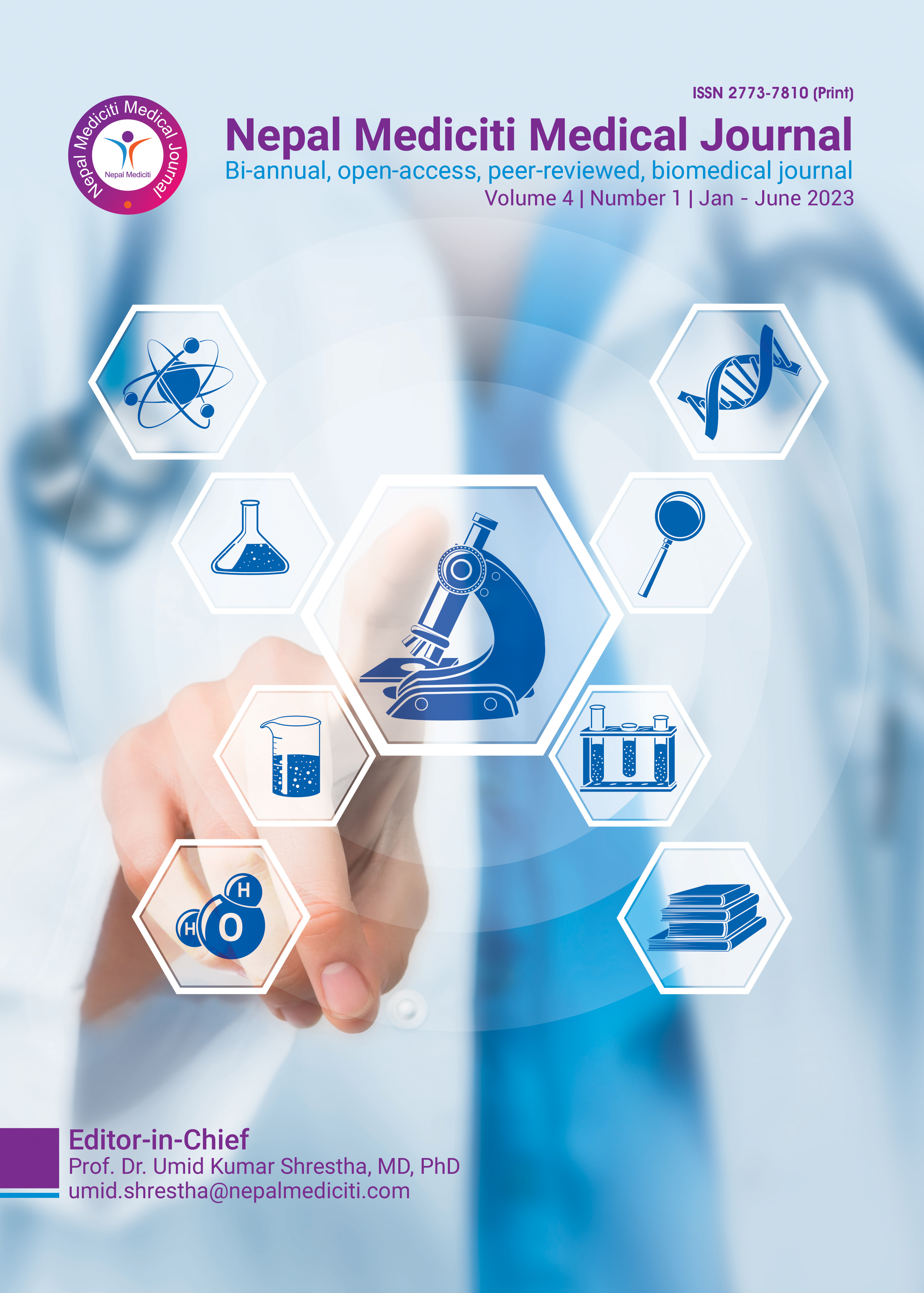A retrospective study on bacteriological profile and antibiotics prescription practice in a tertiary level intensive care unit
DOI:
https://doi.org/10.3126/nmmj.v4i1.57136Keywords:
Antibiotics, Multi-drug resistance, Microorganisms, Escalation, De-escalationAbstract
BACKGROUND Antibiotics are the most commonly prescribed medicines in intensive care units (ICU). The irrational use of antibiotics leads to the development of multidrug-resistant organisms (MDR). The aim of the study is to determine the bacteriological profile of infections in our ICU and antibiotic prescription practice, before and after the culture results.
METHODOLOGY This is a retrospective study conducted in a tertiary-level, 33-bedded ICU in Nepal to evaluate the bacteriological profile and antibiotic prescription practice. The patients who were admitted between a period of 3 months (January 2023 to March 2023) were enrolled. The data variables collected were; patients' details, culture samples sent (blood, urine, endotracheal (ET) aspirate, sputum, cerebrospinal fluid (CSF), wound swab, pleural fluid, ascitic fluid, tissue culture, and peritoneal fluid), gram stain results, culture sensitivity results, empirical antibiotics used, and change in antibiotics following culture results.
RESULTS A total of 378 culture samples were obtained from 230 patients. A positive culture report was obtained for 165 (43.65%) of the 378 samples sent. Urine was the most common sample sent for microbiology (28%), followed by blood (25.3%) and sputum (22.75%). The percentage occurrence of gram-negative bacteria was 84%, while that of gram-positive bacteria was 16%. Methicillin- resistant coagulase-negative staphylococcus (MRCONS) was the most common gram-positive organism isolated (46.15%), and Klebsiella pneumoniae was the most common gram-negative organism (38.84%). Cephalosporin was the commonest group of empirical antibiotics used in our ICU, followed by carbapenem. Empirical antibiotic treatment was continued in 108 patients (47%), changed following the culture results in 92 patients (40%), and discontinued in 30 patients (13%). Escalation of antibiotics was done in 78 patients (85%) and de-escalation in 14 patients (15%).
CONCLUSION Antimicrobial resistance and the irrational prescription of antibiotics can lead to a global economic burden. Hence, antibiotic stewardship programs are required to reduce the irrational prescribing patterns of antibiotics.
Downloads
Downloads
Published
How to Cite
Issue
Section
License

This work is licensed under a Creative Commons Attribution 4.0 International License.
This license enables reusers to distribute, remix, adapt, and build upon the material in any medium or format, so long as attribution is given to the creator. The license allows for commercial use.

